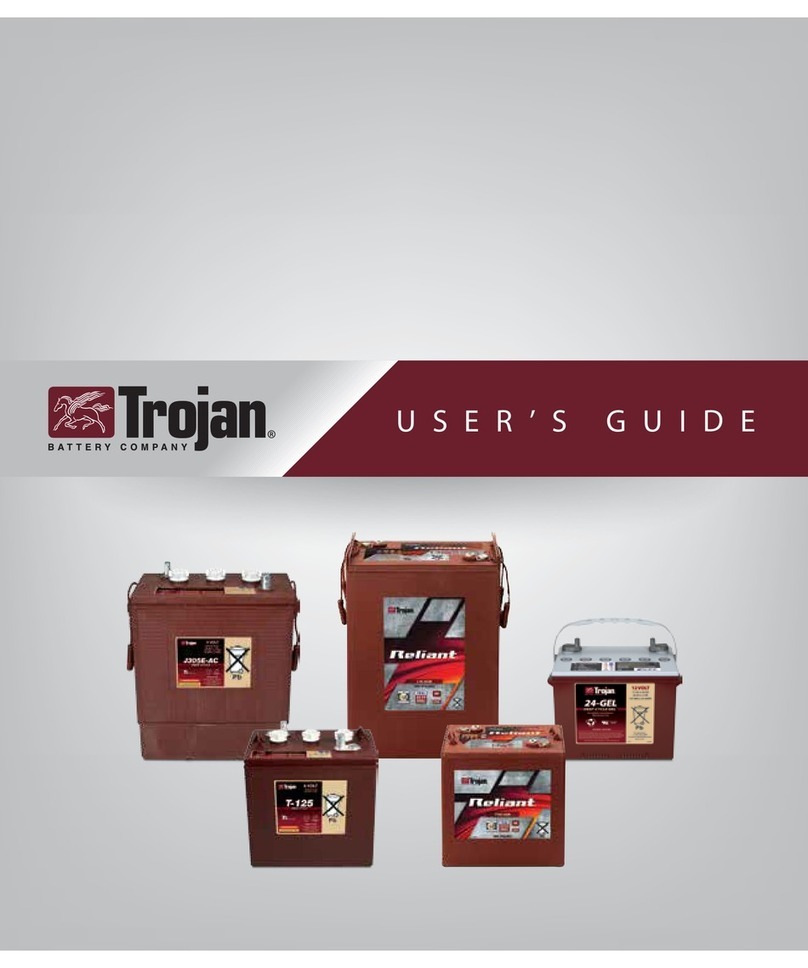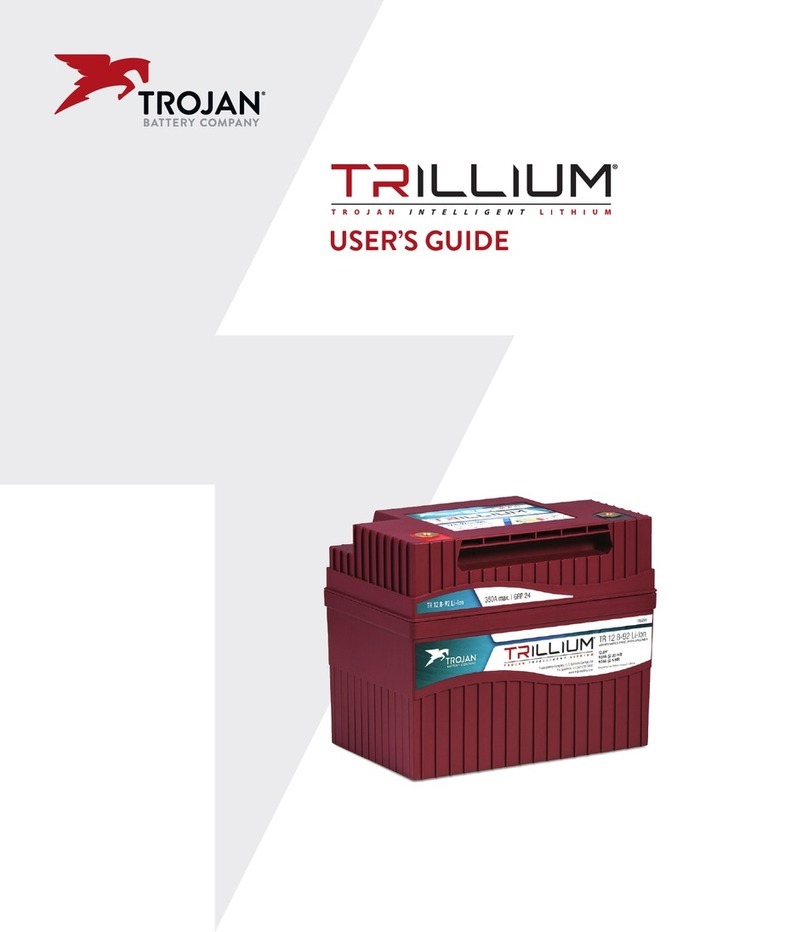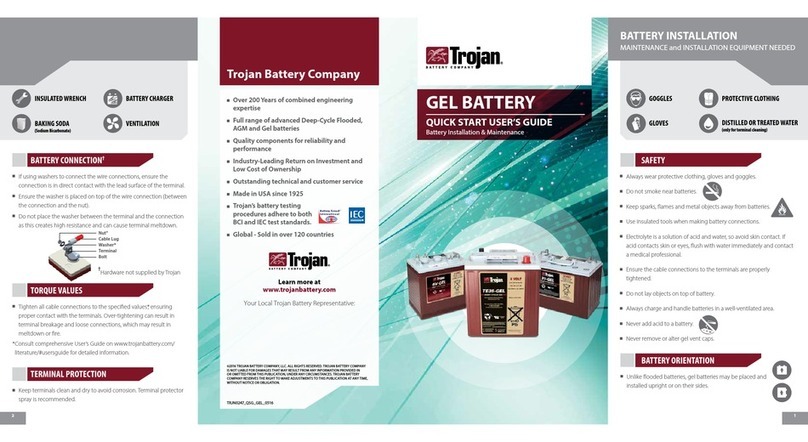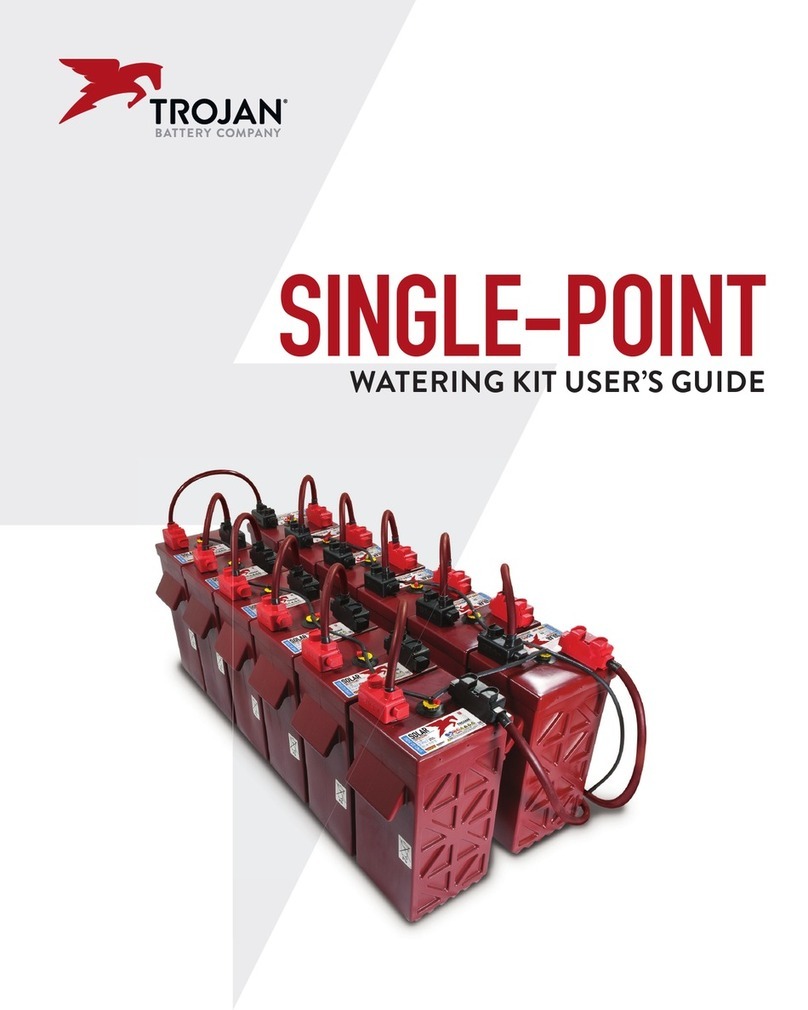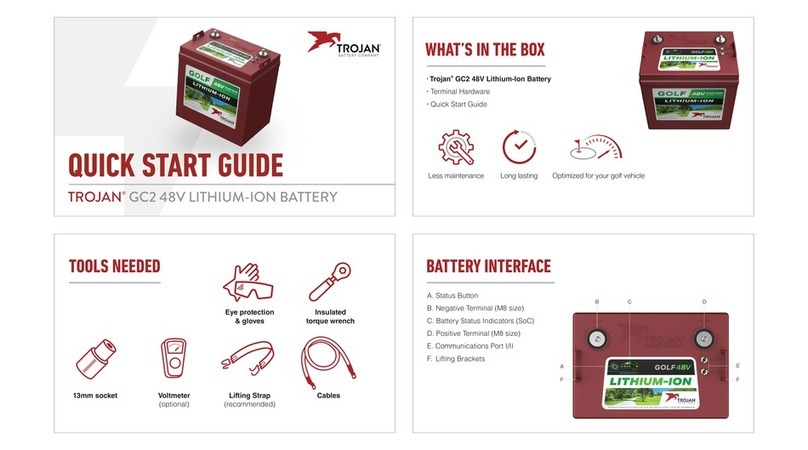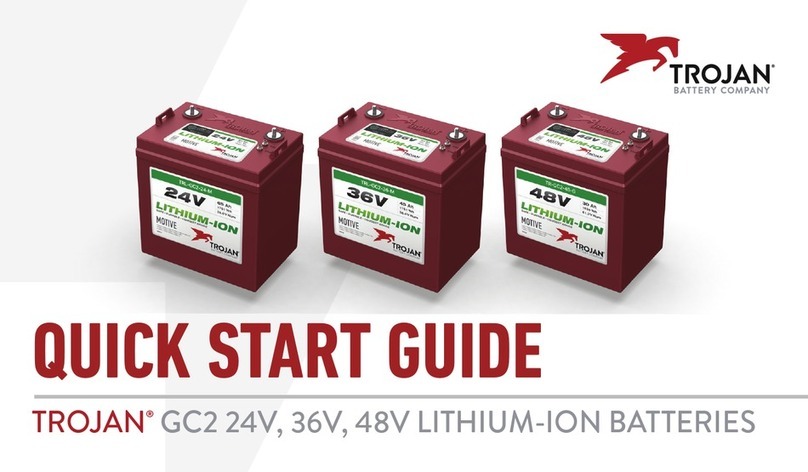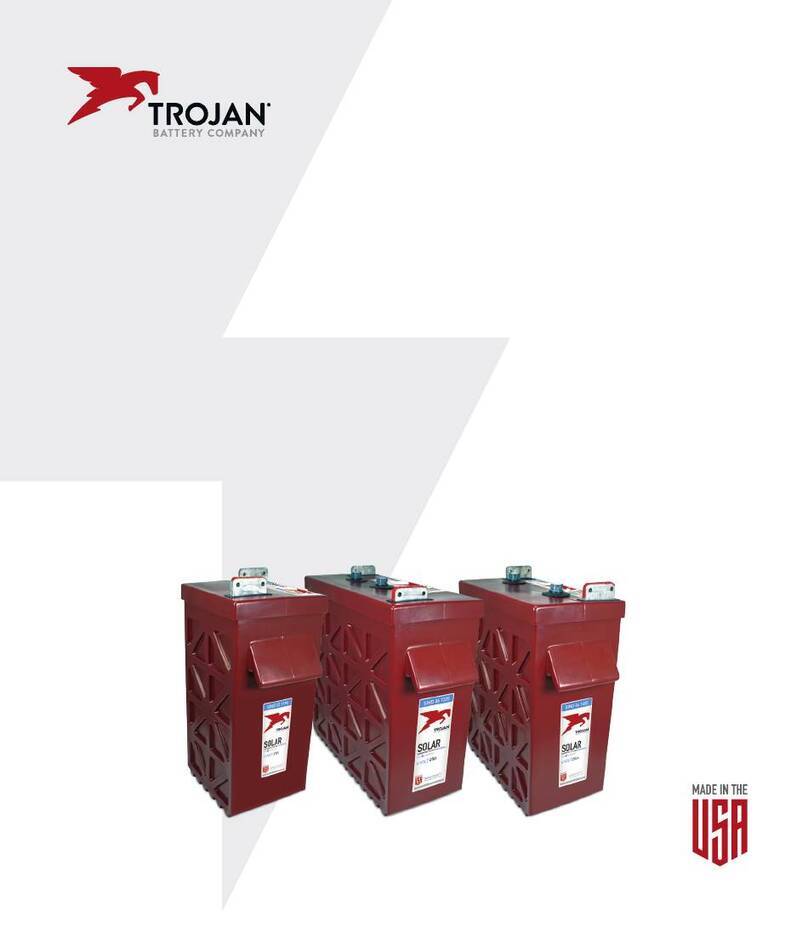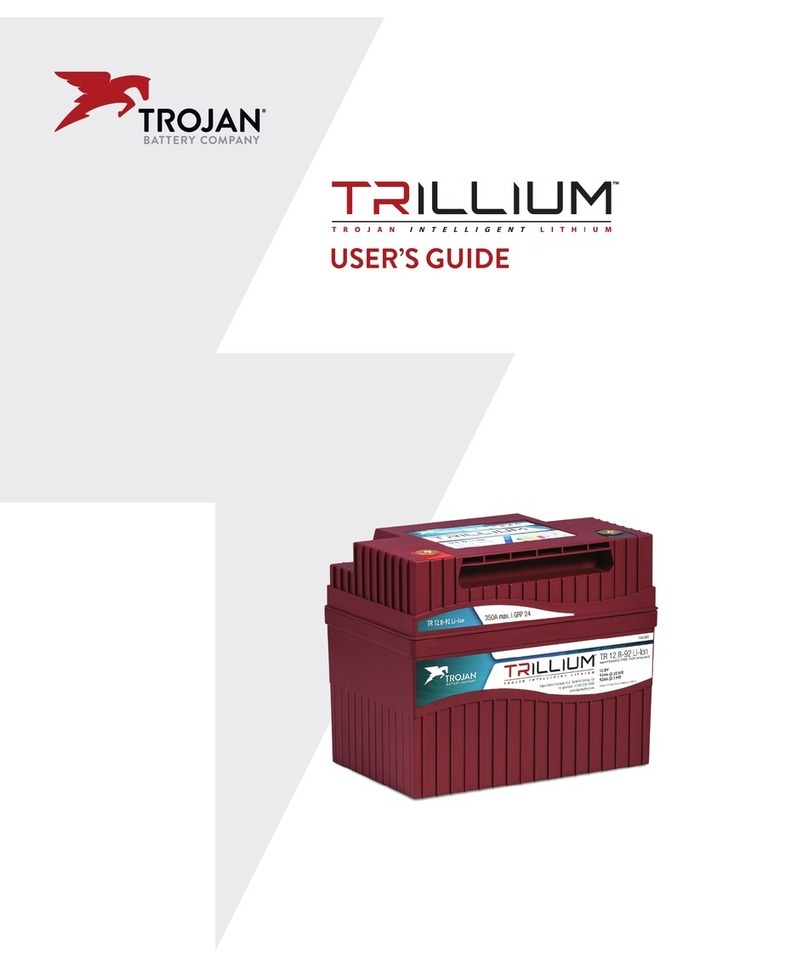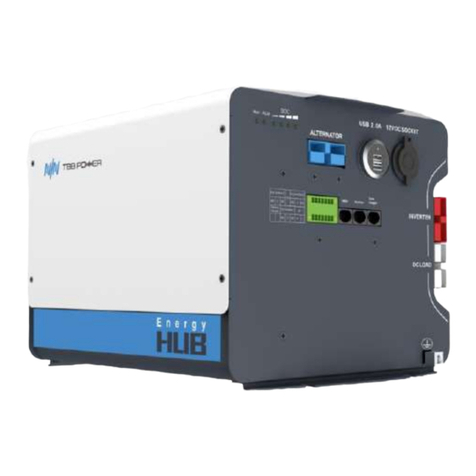
Trojan Battery Lithium-Ion FAQ Guide Rev 06/20/2022 4
INSTALLATION (CONT.)
What's different about
installing Lithium-Ion
batteries versus lead acid?
Installing the Trojan GC2 48V Lithium-Ion Battery is very similar to installing a lead-
acid battery with a GC2 case. The most important difference is that the GC2 48V
should only be connected in parallel with other GC2 48V batteries. They should never
be connected in series and they should not be connected to any other battery type.
When replacing flooded lead acid batteries, ballasts may be needed because of
the difference in weight and center of gravity. See the Trojan GC2 48V Lithium-Ion
Battery User's Guide.
One unique feature of the GC2 48V is the ability to put the battery into Sleep or
Storage mode. This is recommended during installation because it will eliminate
voltage to the terminals, making installation safer.
Can I connect 12V accessories
to a Lithium-Ion battery?
The Trojan GC2 48V Lithium-Ion Battery is a 48V unit, so 12V accessories cannot
be connected directly to it. A Voltage Converter (also known as a Voltage Reducer)
should be used to allow the use of 12V accessories on a 48V system. When these
converters are used, it is recommended that the 48V connections are made from the
first and last battery in the parallel configuration for optimum balance.
MAINTENANCE
Do I need to clean the terminals
and/or does Lithium corrode the
terminals on the batteries?
Lithium-Ion batteries are sealed and do not accelerate corrosion. Some environmental
conditions such as water exposure, saltwater mist or other may still cause corrosion
on copper cable lugs, cables or non-stainless steel hardware. It is recommended to
regularly inspect the terminals on the battery and clean them as needed.
How do I read out the battery
information from the BMS?
Authorized Trojan Lithium-Ion Dealers have Trojan specific cables and software that
allow them to interface with the BMS and read alarm and event history as well as
view details regarding the battery's current condition.
What CAN BUS cables do I need
to connect to the battery?
Connecting to the BMS requires a Trojan Service Cable kit which includes a USB to
CAN adapter, (2) CAN Terminators and an M8 to DB9 adapter.
What is the torque setting
for the terminal?
The terminal should be torqued to between 80 and 90 inch-pounds using a calibrated
torque wrench.
How do I check battery
charge status?
When the button on top of the battery is pressed, a number of Blue LEDs indicate
the state of charge from 0-25% (1 LED), 26-50% (2 LEDs), 51-75% (3 LEDs) and
76-100% (4 LEDs).
